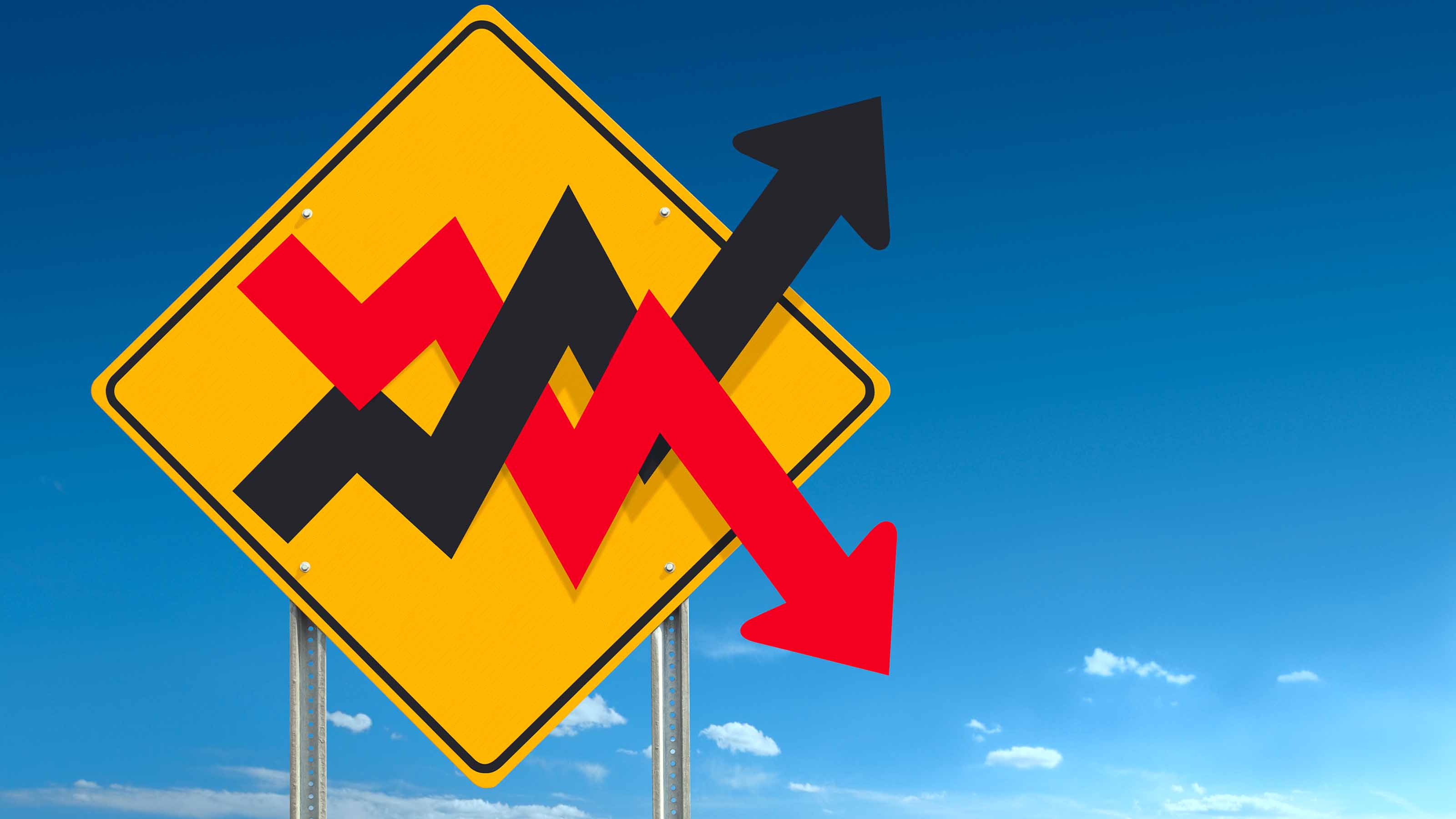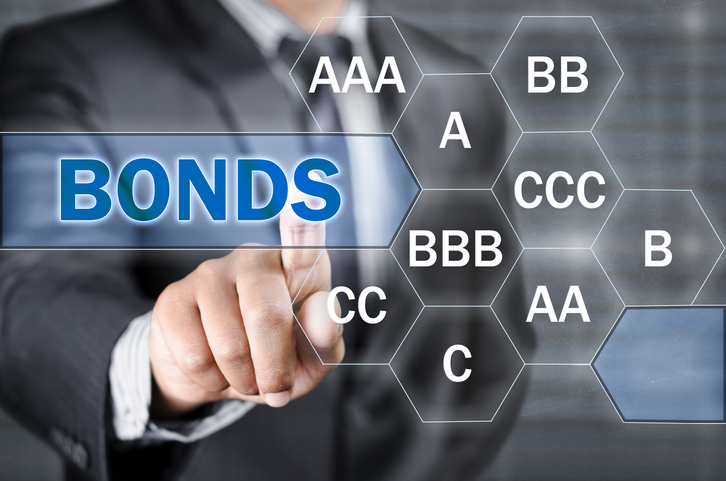Dubious Closed-End Fund Distributions
Managers of many of these stock-like investments promise a high fixed payout but are finding it hard to uphold that guarantee.

The Web site www.etfconnect.com is like an income investor's Christmas catalogue. Ask it to rank the 641 closed-end funds by descending order of distribution rate -- think of the monthly or quarterly cash payouts as akin to yields -- and I promise you'll be excited.
The first 25 yield more than 12%. The next 25 funds range down to 11.5%. Those figures represent the previous 12 months' total payouts divided by the current share price.
Many financial experts are rightly skeptical about any security that consistently posts such high distributions. And many closed-end fund managers pledge to maintain a fixed payout rate every year.

Sign up for Kiplinger’s Free E-Newsletters
Profit and prosper with the best of expert advice on investing, taxes, retirement, personal finance and more - straight to your e-mail.
Profit and prosper with the best of expert advice - straight to your e-mail.
The exceptions include closed-ends that are tied to the price of commodities, such as oil or natural gas, whose dividends rise and fall with the energy market. But the majority of high-payout closed-end funds invest in a variety of foreign and domestic stocks and bonds, from junk to investment grade. Plus, they can speculate in options, futures and currencies.
In good times these funds, which are listed and traded like stocks on a stock exchange, can produce bonanzas for their holders. If a fund invests well, it will produce far more capital gain and dividend income than the promised payout. Then you can get a monster return.
Cornerstone Total Return Fund (symbol CRF) is known for this "managed distributions" policy. Its holdings are a standard collection of blue-chip stocks. Yet, in 2003 Cornerstone shareholders earned 85%, and in 2006 they made 63%. In each year, the fund's assets returned far less.
But closed-end funds don't trade on the basis of supply and demand, and their share prices rarely equal their net-asset value (NAV) per share. With closed-ends, anything can happen.
Here's a closer look at the numbers. Throughout 2006, Cornerstone paid out $.1760 a share per month, or $2.112 for the year. The shares began the year trading at $11.69 and ended at $17.25, although the fund's NAV remained steady. In other words, the bulk of that year's 63% return came from a rising share price.
Why? Investors reasoned that because the monthly payouts were so high relative to other funds that own similar stocks, such as AT&T, Johnson & Johnson, Merck and Wal-Mart, Cornerstone's share price was too low and had to rise so that the distribution rate would be similar to the dividend yield of a blue-chip income fund.
In 2007, Cornerstone boosted the monthly payout a bit, to $2.136 per share for the year. It maintained this payout even though the fund's NAV began to fall. From the start of 2007 through the end of November, the fund's NAV fell 14%, to $8.71 a share.
That means the fund is now promising to distribute 25% of the value of its assets to stockholders -- even though its holdings didn't produce anywhere close to that kind of a return during the up-and-down market of 2007.
So how have Cornerstone's traded shares responded? They've finally tumbled. As recently as June 20, they closed at $18.95 per share. On December 17, they closed at $11.75.
The plunge more than negates the high monthly income. And yet Cornerstone is still trading for way more than the value of the fund's underlying assets -- at a 50% premium to NAV, to be precise. It's easy to see the stock dropping 30% to 50% more.
In November, Cornerstone's managers finally saw that the ice was breaking and announced a new payout policy. But it's not really much of a change.
Starting in 2008, Cornerstone will distribute 21% of the fund's net asset value (this applies to all Cornerstone closed-ends, not just CRF). Based on the current NAV, that will be $1.77 for the year, or $.1482 a month -- a moderate decline in monthly income that still works out to a distribution rate of 14% to 15%.
Unless CRF's investments earn 21% next year -- a level not even the widest-eyed of optimists think is likely -- the fund will need to liquidate assets to pay what it promises. Among other complications, this makes it harder for the fund's managers to handle their portfolio efficiently.
If a shrinking closed-end fund that cannot cover its dividends isn't the nuttiest way to angle for high income, I don't know what is.
Perhaps Cornerstone, with its 21% payout promise, is a special case. But the idea that an ever-rising monthly distribution can support an inflated share price on a closed-end fund may finally be receiving the scrutiny it deserves.
By my count, ten of the 50 highest-yielding closed-end funds have already reduced their distributions this year. And many of them are still not earning enough to cover those lower payouts.
Let's see how the market's treating some of Cornerstone's rivals in the closed-end yield sweepstakes:
Liberty All-Star Equity (USA). Share price, $7.12 (all prices and discount and premium information are as of the close of trading on December 17). Latest annual distribution rate: 88 cents a share, or 12.3%.
There's not much margin of safety here because the fund's policy is to distribute 10% of NAV each year, or 82 cents a year based on the current NAV. The fund, which uses three sets of managers to invest in small, midsize and large growth companies, just cut its quarterly payout from 23 cents to 22.
Unless the bull market revives soon, Liberty might have to cut the payout rate to 20 or 21 cents or start returning shareholders' capital. The share price has dropped about 20% since last summer.
Evergreen Income Advantage (EAD). Share price, $11.32. Latest annual distribution rate, 11.6%.
This fund invests at least 80% of its assets in below-investment-grade bonds and loans. So as you might expect, it is struggling with the problems in the junk bond and mortgage markets. The NAV and share price are both down since summer. The newly reduced distribution rate of $.1094 a month, or $1.31 a year, is about 10% of NAV.
If the junk and mortgage markets were healthy, there wouldn't be a problem. But if those markets keep weakening, Evergreen will have problems earning enough to cover the present payout. Adding to this fund's risk is its use of leverage, which means it borrows money to increase its holdings. The shares are off 15% since summer.
MFS Special Value Trust (MFV). Share price, $7.60. Latest distribution rate, 11.5%.
This portfolio of high-yield bonds, common and preferred stocks and floating-rate bank loans is nicely diversified. MFS pledges to pay out 10% of its average daily NAV, which amounts to 85 cents a year on the basis of the current NAV of $8.52 per share.
The latest monthly distribution of $.0727 works to 87 cents. So if the assets do not deteriorate in value from here, the fund should have little trouble maintaining its dividend. However, it may have to dip into capital yet again, something it did in 2004, 2005 and 2006.
The share price, though, is another matter: It's down from $11.59 in late May to $7.60. That's the lowest since the fund's inception in 1989. The discount to NAV, at 10.9%, is still a lot narrower than those of other fallen high-yielding closed-ends.
Again, if you think junk bonds and mortgages will soon recover, MFS is a reasonably safe bet. If you don't, avoid this high-wire act.
That goes for nearly all of the highest-paying closed-ends. If they're selling at a premium to NAV, the handwriting's on the wall. And if they're at a discount, the market doubts they can earn enough to cover their generous dividend promises. Until conditions improve in the credit markets, give them a pass.
Follow-up on municipal bonds
Two weeks ago, I wrote about the possibility that municipal-bond insurers could lose their triple-A credit ratings and thus produce a chain reaction that could result in the downgrading of insured tax-free bonds.
On December 17, Moody's affirmed its highest Aaa ratings on MBIA and Ambac, the two largest insurers of the principal and eventual payment of interest on tax-exempt bonds. Moody's gave Ambac a clean bill, although it has a negative outlook on MBIA.
MBIA managed, in the meantime, to get a $1 billion "capital infusion" from an investment firm. However, bearish analysts think that's far short of what the company needs to be able to cover its obligations in the insurance of some troubled mortgage pools.
Three ironies here: One is that Wall Street almost commanded MBIA and Ambac to go beyond the sleepy but safe business of insuring municipal bonds to take on asset-backed debts, which are much riskier. So for investment firms to criticize their performance is sort of unfair.
The second irony is that when the news broke that the bond insurers might be downgraded, the stock market tanked. So when Moody's let the bond market exhale, what did stocks do? They went on tanking.
The third and final irony is that bond insurance has proven over the years to be of little value to muni buyers. States and local governments and their agencies, the issuers of muni bonds, rarely default, and it's hard to single out any insured bonds that would be unsafe but for the insurance. Instead, they would be rated single-A or double-A -- and paying out better yields to their holders.
A final note ...
If you read real estate investor publications or blogs, you'll see some end-of-year propaganda from promoters of private REITs. These are real estate investment trusts that sell fixed-price units for $10 apiece and do not trade publicly.
Because these deals offer the investor a chance to sell the units back to the issuer for the same price as issued, the brokers and financial planners who sell them claim that private REITs offer REIT-like yields but with the safety of certificates of deposit.
True, in a fashion. But the propaganda I'm talking about refers to statements from private REITs and their advocates about how wonderful it is that they dodged the big decline in REIT share prices in 2007 (NAREIT equity REIT index was off 18% year-to-date through December 17).
Again, that's true. Only problem is, what do you say about 2006, 2005, 2004, 2003 and all the other years when REIT share prices flourished. If you invested in regular, fully liquid REITs in those years, you -- not an investment firm -- got the benefit of healthy real estate markets.
When I return from vacation in January, I'll weigh in again on real estate securities, municipal bonds and other reliable and sensible income investments.
Get Kiplinger Today newsletter — free
Profit and prosper with the best of Kiplinger's advice on investing, taxes, retirement, personal finance and much more. Delivered daily. Enter your email in the box and click Sign Me Up.

-
 Stock Market Today: Stocks Gain on Tech, Auto Tariff Talk
Stock Market Today: Stocks Gain on Tech, Auto Tariff TalkThe Trump administration said late Friday that it will temporarily halt tariffs on some Chinese tech imports.
By Karee Venema
-
 Sam's Club Plans Aggressive Expansion: Discover Its New Locations
Sam's Club Plans Aggressive Expansion: Discover Its New LocationsSam's Club expansion plans will open up to 15 new stores each year. Learn where they plan to open in 2025.
By Sean Jackson
-
 Why Investors Needn't Worry About U.S. Credit Downgrade
Why Investors Needn't Worry About U.S. Credit DowngradeFitch Ratings The United States saw its credit rating downgraded for just the second time in history, but experts aren't worried about the long-term damage to stocks.
By Dan Burrows
-
 Income-Investing Picks for a Recession
Income-Investing Picks for a RecessionInvesting for Income Some consequences of an economic downturn work to the benefit of fixed-income investors. Here are three fund ideas that fit the bill.
By Jeffrey R. Kosnett
-
 Dogs of the Dow Are 2022's Best in Show
Dogs of the Dow Are 2022's Best in Showdividend stocks Some of the best investments for income investors in a volatile 2022 have come from the Dogs of the Dow.
By Jeffrey R. Kosnett
-
 Bond Values in a Volatile Market
Bond Values in a Volatile MarketInvesting for Income While the market's instability may not be over just yet, the latter half of the year should be less daunting – and possibly more rewarding – for investors.
By Jeffrey R. Kosnett
-
 Should You Buy Bonds Now? What To Consider
Should You Buy Bonds Now? What To Considerbonds The fixed-income market has been turned on its head in recent years, but there are still opportunities for those looking to buy bonds again.
By James K. Glassman
-
 Dividend Dates: A Beginner's Guide
Dividend Dates: A Beginner's Guidedividend stocks Everything you need to know about ex-dividend dates, dividend announcements and other parts of the dividend calendar.
By Charles Lewis Sizemore, CFA
-
 Income Investors Should Look Beyond the Ukraine Invasion
Income Investors Should Look Beyond the Ukraine Invasionstocks Unless you invested in a Russian-themed ETF or an emerging markets index fund, the destruction of Moscow's capital markets is a distraction for investors.
By Jeffrey R. Kosnett
-
 Consider Short-Term Bond Funds
Consider Short-Term Bond FundsInvesting for Income These funds own the kind of stuff that benefits from a healthy economy and can withstand the Fed's rate hikes.
By Jeffrey R. Kosnett